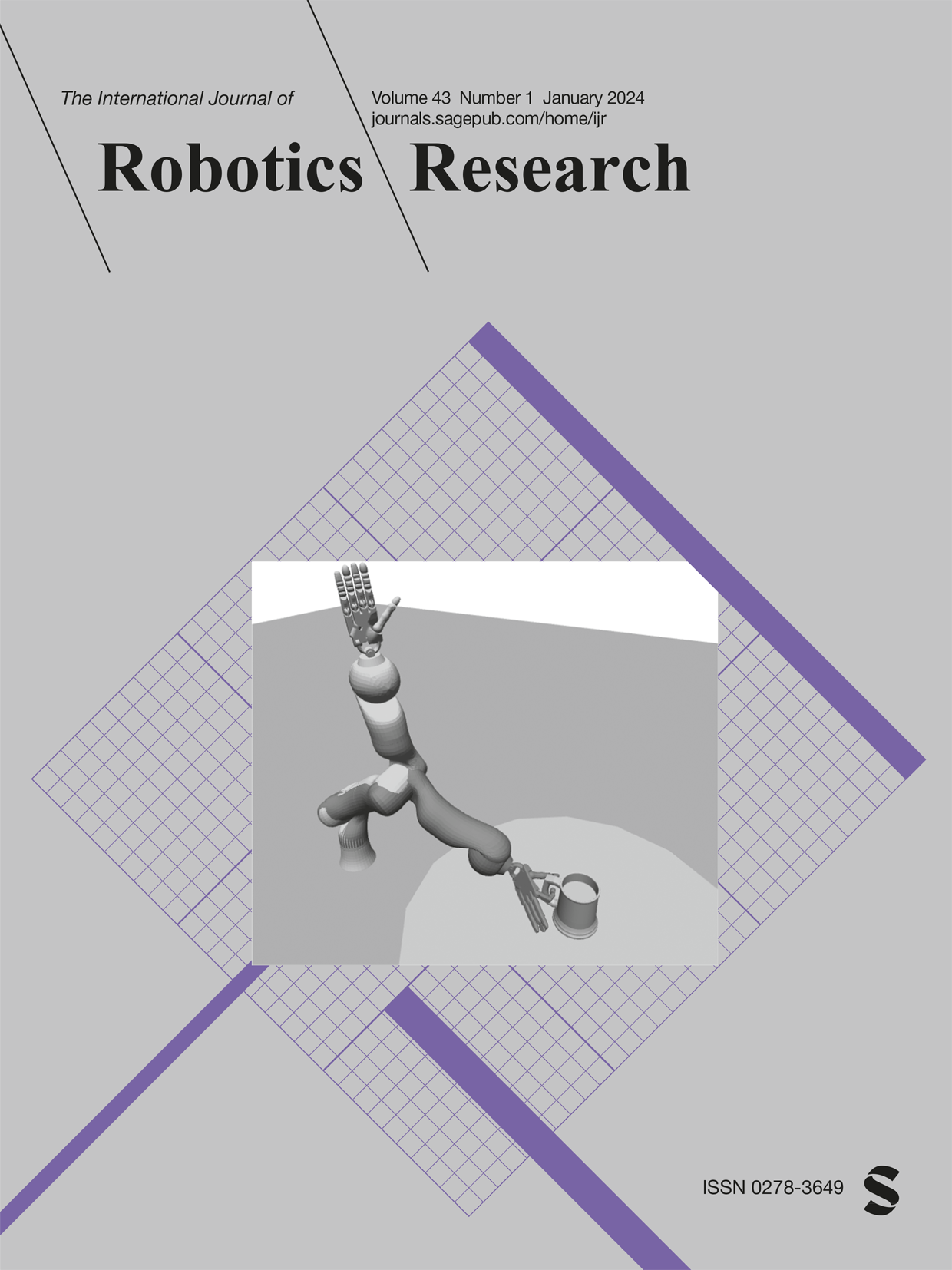SVIn2:一种基于多传感器融合的水下SLAM系统
IF 5
1区 计算机科学
Q1 ROBOTICS
引用次数: 15
摘要
本文介绍了SVIn2,这是一种新型的基于关键帧的紧密耦合同步定位和映射(SLAM)系统,它在一个非线性优化框架中融合了扫描轮廓声纳、视觉、惯性和水压信息,适用于小型和大型具有挑战性的水下环境。所开发的实时系统具有强大的初始化、闭环和重新定位功能,这使得该系统在水下场景中通常观察到的雾度、模糊度、弱光和照明变化的情况下是可靠的。在过去的十年里,视觉惯性里程计和SLAM系统在室内和室外环境中对移动机器人表现出了优异的性能,但由于在这种环境中固有的困难,它们经常在水下失效。我们的方法通过利用额外的传感器并利用它们的互补特性来克服以前方法的弱点。特别地,由于可靠的距离测量,我们使用(1)声学距离信息来改进重建和定位;(2) 来自水压传感器的深度信息,用于稳健的初始化,细化尺度,并有助于限制紧密耦合集成中的漂移。开发的软件是开源的,已成功用于在基准数据集和许多真实世界的水下场景中测试和验证所提出的系统,包括使用定制的水下传感器套件和自动水下航行器Aqua2收集的数据集。SVIn2在这些数据集上表现出了卓越的准确性和稳健性,并支持其他机器人任务,例如,在有障碍物的情况下规划水下机器人。本文章由计算机程序翻译,如有差异,请以英文原文为准。
SVIn2: A multi-sensor fusion-based underwater SLAM system
This paper presents SVIn2, a novel tightly-coupled keyframe-based Simultaneous Localization and Mapping (SLAM) system, which fuses Scanning Profiling Sonar, Visual, Inertial, and water-pressure information in a non-linear optimization framework for small and large scale challenging underwater environments. The developed real-time system features robust initialization, loop-closing, and relocalization capabilities, which make the system reliable in the presence of haze, blurriness, low light, and lighting variations, typically observed in underwater scenarios. Over the last decade, Visual-Inertial Odometry and SLAM systems have shown excellent performance for mobile robots in indoor and outdoor environments, but often fail underwater due to the inherent difficulties in such environments. Our approach combats the weaknesses of previous approaches by utilizing additional sensors and exploiting their complementary characteristics. In particular, we use (1) acoustic range information for improved reconstruction and localization, thanks to the reliable distance measurement; (2) depth information from water-pressure sensor for robust initialization, refining the scale, and assisting to limit the drift in the tightly-coupled integration. The developed software—made open source—has been successfully used to test and validate the proposed system in both benchmark datasets and numerous real world underwater scenarios, including datasets collected with a custom-made underwater sensor suite and an autonomous underwater vehicle Aqua2. SVIn2 demonstrated outstanding performance in terms of accuracy and robustness on those datasets and enabled other robotic tasks, for example, planning for underwater robots in presence of obstacles.
求助全文
通过发布文献求助,成功后即可免费获取论文全文。
去求助
来源期刊
CiteScore
22.20
自引率
0.00%
发文量
34
审稿时长
6-12 weeks
期刊介绍:
The International Journal of Robotics Research (IJRR) has been a leading peer-reviewed publication in the field for over two decades. It holds the distinction of being the first scholarly journal dedicated to robotics research.
IJRR presents cutting-edge and thought-provoking original research papers, articles, and reviews that delve into groundbreaking trends, technical advancements, and theoretical developments in robotics. Renowned scholars and practitioners contribute to its content, offering their expertise and insights. This journal covers a wide range of topics, going beyond narrow technical advancements to encompass various aspects of robotics.
The primary aim of IJRR is to publish work that has lasting value for the scientific and technological advancement of the field. Only original, robust, and practical research that can serve as a foundation for further progress is considered for publication. The focus is on producing content that will remain valuable and relevant over time.
In summary, IJRR stands as a prestigious publication that drives innovation and knowledge in robotics research.

 求助内容:
求助内容: 应助结果提醒方式:
应助结果提醒方式:


